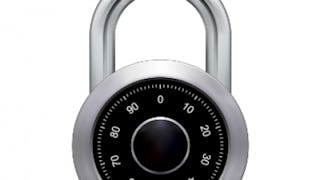In this MOOC, we will learn the basic concepts and principles of crytography, apply basic cryptoanalysis to decrypt messages encrypted with mono-alphabetic substitution cipher, and discuss the strongest encryption technique of the one-time-pad and related quantum key distribution systems. We will also learn the efficient symmetric key cryptography algorithms for encrypting data, discuss the DES and AES standards, study the criteria for selecting AES standard, present the block cipher operating modes and discuss how they can prevent and detect the block swapping attacks, and examine how to defend against replay attacks. We will learn the Diffie-Hellman Symmetric Key Exchange Protocol to generate a symmetric key for two parties to communicate over insecure channel. We will learn the modular arithmetic and the Euler Totient Theorem to appreciate the RSA Asymmetric Crypto Algorithm, and use OpenSSL utility to realize the basic operations of RSA Crypto Algorithm. Armed with these knowledge, we learn how to use PHP Crypto API to write secure programs for encrypting and decrypting documents and for signing and verify documents. We then apply these techniques to enhance the registration process of a web site which ensures the account created is actually requested by the owner of the email account.


Basic Cryptography and Programming with Crypto API
This course is part of Fundamentals of Computer Network Security Specialization

Instructor: Edward Chow
15,386 already enrolled
Included with
(100 reviews)
Skills you'll gain
Details to know

Add to your LinkedIn profile
See how employees at top companies are mastering in-demand skills

Build your subject-matter expertise
- Learn new concepts from industry experts
- Gain a foundational understanding of a subject or tool
- Develop job-relevant skills with hands-on projects
- Earn a shareable career certificate

There are 4 modules in this course
In this module we learn the basic concepts and principles of crytography, introduce the basic concept of cryptoanalysis using mono-alphabetic substitution cipher as an example, and discuss the one-time-pad and quantum key distribution concepts.
What's included
6 videos6 readings1 assignment1 discussion prompt
In this module we present the basic mechanism of symmetric key crytography algorithms, discuss the DES and AES standard, describe the criteria for selecting AES standard, present the block cipher operating modes and discuss how the block swapping attacks and replay attacks can be prevented and detected.
What's included
6 videos5 readings1 assignment1 peer review
In this module we will learn the modular arithmetic, the Euler Totient Theorm, the RSA Asymmetric Crypto Algorithm, use OpenSSL to realize the basic operations of RSA Crypto Algorithm, and Diffie-Hellman Symmetric Key Exchange Protocol to derive session keys.
What's included
5 videos5 readings1 assignment1 peer review
In this module, we learn how to use Crypto API to write secure programs for encrypting and decrypting documents, and for signing and verify documents. We then apply the techniques to enhance the registration process of a web site which ensures the account created is actually belonging to the owner of the email account the request profile.
What's included
3 videos3 readings1 assignment
Earn a career certificate
Add this credential to your LinkedIn profile, resume, or CV. Share it on social media and in your performance review.
Instructor

Offered by
Explore more from Computer Security and Networks
 Status: Preview
Status: PreviewUniversity of Leeds
 Status: Free Trial
Status: Free Trial Status: Preview
Status: PreviewStanford University
 Status: Preview
Status: PreviewUniversity of London
Why people choose Coursera for their career




Learner reviews
100 reviews
- 5 stars
73%
- 4 stars
15%
- 3 stars
7%
- 2 stars
2%
- 1 star
3%
Showing 3 of 100
Reviewed on Sep 9, 2019
This Course is good but difficult for learner. To provide better knowledge as expert level course should be extended.
Reviewed on May 29, 2020
Good, I gained knowledge on which m did not have knowledge.
Reviewed on Apr 1, 2018
The course content is excellent. It would be much better if some errors (like misspelled words, improper capitalization etc) would be corrected

Open new doors with Coursera Plus
Unlimited access to 10,000+ world-class courses, hands-on projects, and job-ready certificate programs - all included in your subscription
Advance your career with an online degree
Earn a degree from world-class universities - 100% online
Join over 3,400 global companies that choose Coursera for Business
Upskill your employees to excel in the digital economy
Frequently asked questions
To access the course materials, assignments and to earn a Certificate, you will need to purchase the Certificate experience when you enroll in a course. You can try a Free Trial instead, or apply for Financial Aid. The course may offer 'Full Course, No Certificate' instead. This option lets you see all course materials, submit required assessments, and get a final grade. This also means that you will not be able to purchase a Certificate experience.
When you enroll in the course, you get access to all of the courses in the Specialization, and you earn a certificate when you complete the work. Your electronic Certificate will be added to your Accomplishments page - from there, you can print your Certificate or add it to your LinkedIn profile.
Yes. In select learning programs, you can apply for financial aid or a scholarship if you can’t afford the enrollment fee. If fin aid or scholarship is available for your learning program selection, you’ll find a link to apply on the description page.
More questions
Financial aid available,
¹ Some assignments in this course are AI-graded. For these assignments, your data will be used in accordance with Coursera's Privacy Notice.

